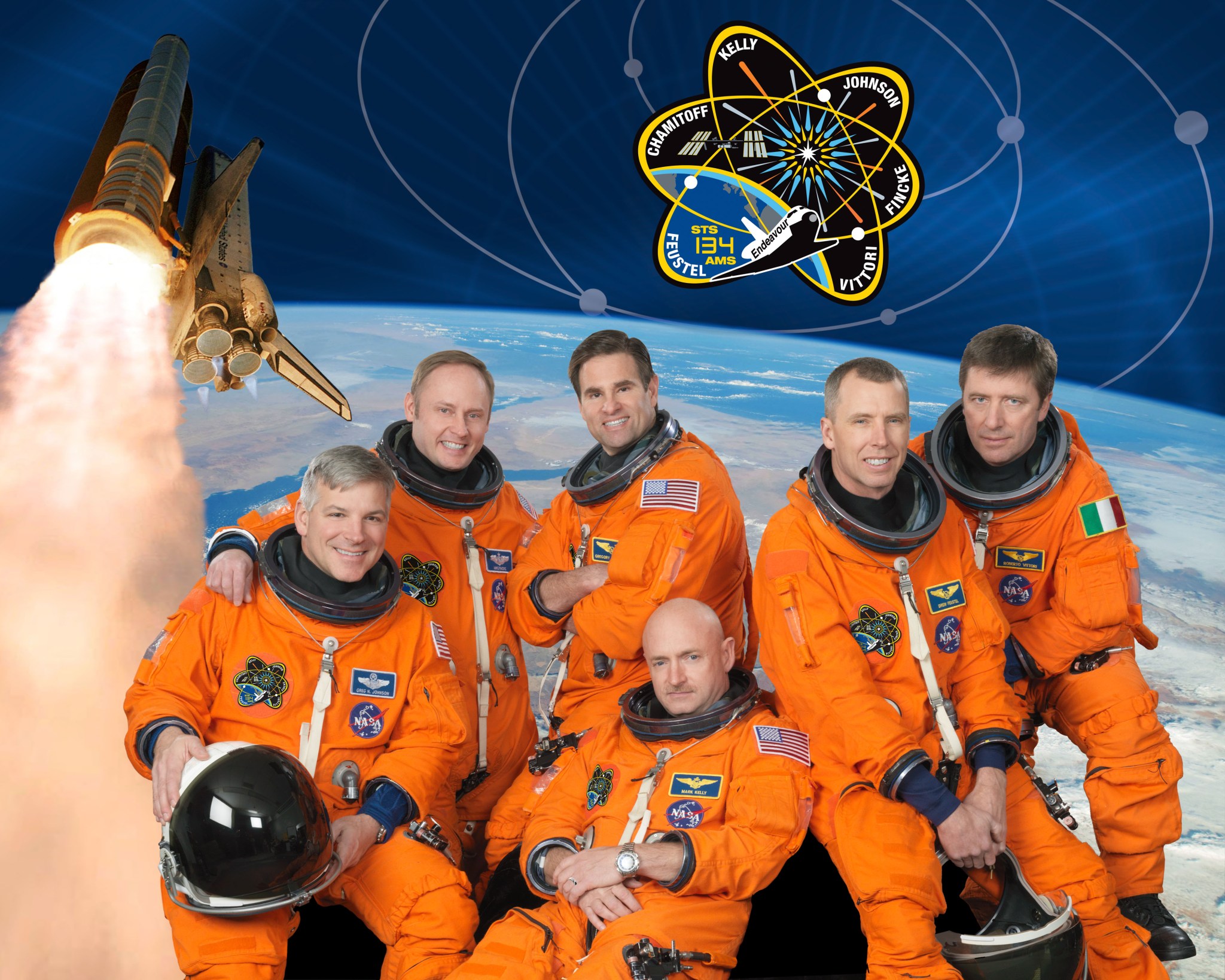On its final mission, space shuttle Endeavour will help pave the way to find answers to unsolved mysteries of the universe.
Among the cargo Endeavour will be carrying on its STS-134 mission to the International Space Station is a new scientific tool, the Alpha Magnetic Spectrometer. The spectrometer will search for unusual types of matter, such as dark matter and antimatter, by measuring cosmic rays, radiation from distant stars. The cosmic ray studies also will help scientists learn more about the radiation present in our solar system.
Scientists hope that the Alpha Magnetic Spectrometer will provide benefits in many areas. The knowledge it provides should help scientists better understand the origins of the universe and the laws of physics that govern it. Greater knowledge of space radiation could help engineers design better shielding for human missions beyond our planet.
An earlier version of the instrument flew on space shuttle Discovery’s STS-91 mission in 1998. The new version will be mounted on the exterior of the space station, where the spectrometer will provide data for many years to come.
The Alpha Magnetic Spectrometer is only one part of the cargo being delivered to the space station on Endeavour’s final flight. A materials science experiment will be mounted outside the station. New sensors will be installed to aid future spacecraft in docking to the space station. Endeavour also will deliver extra parts to the station so that they will be available for future use.
STS-134 will be the 36th time a space shuttle has visited the space station and the 25th flight of Endeavour. Built after the loss of the space shuttle Challenger in 1986, Endeavour first flew in 1992. The name “Endeavour” was chosen through a contest in which students proposed names for the vehicle. It honors the British research vessel sailed by Captain James Cook on his first voyage of discovery to Australia and New Zealand more than 240 years ago. The shuttle also shares its name with the command module that flew around the moon on the Apollo 15 mission. Highlights of space shuttle Endeavour’s career include the first Hubble Space Telescope servicing mission and the launch of the Unity node, the first major U.S. component of the International Space Station.

The design of the STS-134 mission patch is shaped like a stylized atom to represent the launch of the Alpha Magnetic Spectrometer. Image Credit: NASA
Commanding Endeavour for the STS-134 mission will be astronaut Mark Kelly, who will be making his fourth flight to the International Space Station. The mission’s pilot is Greg H. Johnson, who previously served as pilot of the STS-123 mission in 2008. Mission specialists for STS-134 will be Greg Chamitoff, Michael Fincke, Roberto Vittori and Andrew Feustel. Both Chamitoff and Fincke have lived on the space station before as long-duration crew members; Fincke spent a total of a year in orbit on his two previous missions. Vittori, an Italian astronaut from the European Space Agency, has flown on the Russian Soyuz vehicle previously but will be making his first shuttle flight on STS-134. Feustel flew on the 2009 STS-125 mission to make improvements to the Hubble Space Telescope.
The STS-134 mission is an important step in preparing for the future of spaceflight. NASA is working to carry out a long-term plan that will lead to human exploration of the solar system. Currently, NASA is focused on completing the International Space Station before the shuttle fleet’s retirement, planned for 2011. The station is an important platform for learning how to live and work in space and will be vital to exploration as human space travel extends farther from Earth.
NASA is committed to building strategic partnerships and links between science, technology, engineering and mathematics formal and informal educators. Through hands-on, interactive educational activities, NASA is engaging students, educators, families, the public and all agency stakeholders to increase scientific and technological literacy in the United States.
Related Resources:
› STS-134
› NASA Education
› The Naming Of Space Shuttle Endeavour
› Mark Kelly on Twitter →
› Gregory H. Johnson on Twitter →
› Mike Fincke on Twitter →



























